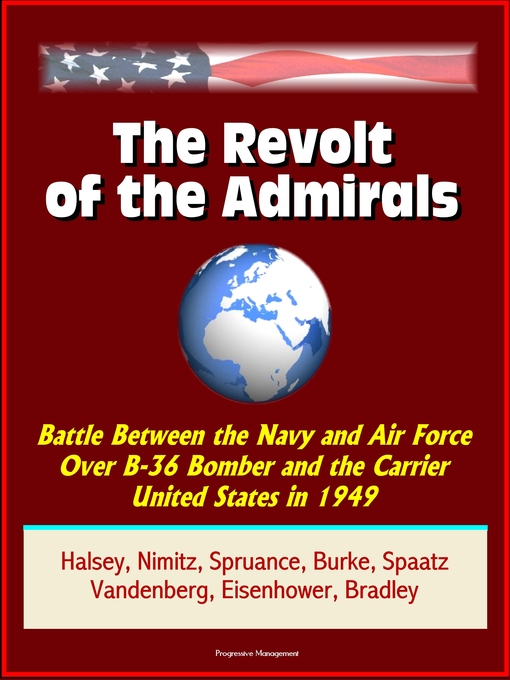Professionally converted for accurate flowing-text e-book format reproduction, this informative book examines the famous incident known as the revolt of the Admirals, a subject that has intrigued military officers for some time. The revolt was actually an intense inter-service debate between the Navy and the Air Force ostensibly over the B-36 bomber program. The conflict grew; however, to encompass not only the B-36 and the proposed carrier United States, but also it became a struggle over unification and roles and missions. Additionally, the revolt is of particular interest to military officers of today. Living in the politically charged environment in which we are forced to survive, it is refreshing to study the sincere and poignant arguments of some of the greatest military officers in American history engaged in debate over doctrine. Names like Halsey, Nimitz, Spruance, Burke, Eaker, Spaatz, Vandenberg, Eisenhower, and Bradley all had direct influence in the controversy, and we are obliged as military officers to take note of their arguments and concerns of nearly fifty years ago.
PREFACE * ABSTRACT * INTRODUCTION * UNIFICATION AND THE COLD WAR * DOCTRINE * Air Force Doctrine * Navy Doctrine. * LEADERSHIP AND PUBLIC RELATIONS * The Navy * Leadership * Public Relations * The Air Force * Leadership * Public Relations * THE REVOLT OF THE ADMIRALS * The Anonymous Document and the Agenda * The August Hearings * September * Testimony * The Navy * General Omar N. Bradley, Chairman Joint Chiefs of Staff * The Air Force * Conclusions * AFTERMATH * Doctrine * Naval Leadership * OP-23 * Conclusions * BIBLIOGRAPHY
When the controversy over the B-36 erupted in the spring of 1949, Pandora's Box was opened on service unification issues. The debate was officially over the B-36 procurement process, but it grew to include a debate over roles and missions between the Air Force and the Navy. The Congressional testimony before the House Armed Services Committee illustrated some pertinent lessons from the "revolt of the admirals."
The Air Force won the revolt, but the question was why? Was it because their case was sounder than the Navy's, or was it for some other hidden reason? How did doctrine, leadership, and public relations factor into the conflict?
This essay will discuss these questions using primary and secondary source material from the Air University Library and the Air Force Historical Research Agency; both located at Maxwell AFB, Alabama. There are few books (Revolt of the Admirals; the Fight for Naval Aviation, 1945-1950 by Jeffrey Barlow is the one notable exception.) that deal directly with the subject, but there is sufficient peripheral information and a considerable amount of source material in the form of periodical literature. The subject will be discussed addressing the previously mentioned categories of doctrine, leadership, and public relations. First, the historical framework of unification will be established.

